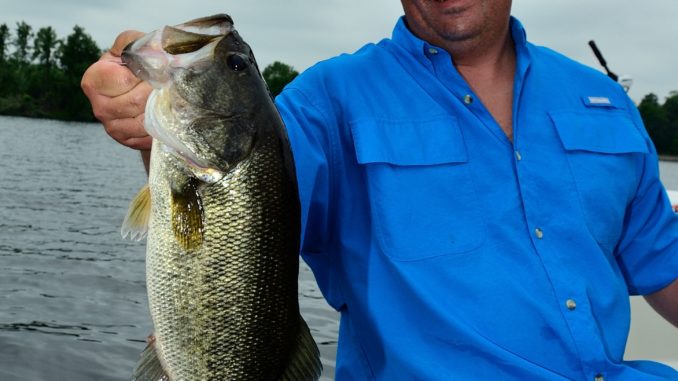
Wilmington’s Sutton Lake provides bass fishermen with unusual action.
When the historic port city of Wilmington shows up on most anglers’ radar, the bountiful inshore and offshore fisheries quickly come to mind. But a sensational freshwater fishery flourishes just minutes from the salt and the bustling city.
Sutton Lake, an 1,100-acre reservoir situated adjacent to the banks of the Cape Fear River, is home to one of the hottest largemouth bass fisheries North Carolina has to offer.
And hot it is!
A series of eight lakes are consistently fed thermally-heated water from Duke Power’s neighboring L.V. Sutton Steam Electric Plant, which generates energy from coal and natural gas. From winter through early summer, ideal water temperatures for bass can be found on any of the eight lakes. From a canal leaving the plant, hot water discharges into Lake No. 1 and continues in succession all the way to Lake No. 8 and then back into the plant. The consistent flow of warm water regulates water temperature and spurs feeding activity from bass before other lakes and rivers in the lakes have recovered from the winter.
The warmer-than-normal water helps spur spawning activity among bass, starting in the first lake and continuing through the system. Guide Jot Owens, who heads to Sutton Lake around the time spring arrives in March, calls it a progression of spawning activity.
“In March, the water temperatures will range from the low 50s to as warm as 70 degrees,” said Owens (910-233-4139), “You will have post-spawn fish in the first two lakes, spawning in the middle lakes, and then prespawn in the last lakes.”
Anglers can have their choice of which stage to target at any time through March and April. Owens, however, prefers the post-spawn mode.
“Most of the bass are off the beds in first few lakes, and they are really hungry. All they want to do is eat,” he said.
Not only will the warm water wake up the bass, the baitfish begin to stir and bask in the tepid waters of the first couple of lakes, creating a feeding frenzy that ignites topwater fishing for which Sutton Lake is well known.
“(From) March through April, there is always lots of surface-feeding activity,” Owens said. “On days with little wind, it’s not uncommon to see fish crashing on bait scattered all over the first few lakes throughout the day. It’s a no-brainer that these fish are happy and ready to eat something”
Owens recommends 1/8- to 3/8-ounce Johnson spinnerbaits and small topwater plugs, including Sebile’s Slim-stick or Ghost Walker for duping surface feeding fish.
And a lack of topwater activity isn’t a sign that the fish are inactive. Owens has just as much success on shallow-water fish that aren’t busting the surface.
“When they leave the beds, they go to just about anywhere in the lake in open water and associated with structure along the bank,” he said. “They seem to prefer water from 1 to 4 feet deep this time of year.”
Owens also finds plenty of fish in the lakes’ deeper areas, specifically, along the shallow sides of the rim ditches where water is from 4 to 8 feet deep. He prefers Power Bait heavy sink worms (6-, 7- and 8-inch varieties) rigged weedless on a 4/0 hook with no added weight. He prefers the watermelon/red flake or the black with red or blue flake. He says the gentle glide of a worm toward the bottom will often produce . a quick strike from a hungry bass.
“Overall, small baits and super-light tackle are required to get these fish to play,” said Owens, who uses an 18- to 24-inch leader of 15- to 20-pound fluorocarbon to add to the natural presentation of the lures.
While post-spawn tactics will lend anglers double-digit catches, Lake Nos. 2, 3, and 4 offer fishermen the opportunity to catch big females on the beds through April. Guide Mike Hoffman prefers to sight-fish for big, spawning females early in the spring.
“In March, the big ones will be on the beds around the full moon (March 27) in the lakes where the water temperature runs between 57 and 62 degrees. It is usually the second couple of lakes, but drive around until you find that temperature range,” said Hoffman (910-619-8509). “You have got to pay attention to the water temperature to find spawning fish.”
Hoffman concentrates on flats in 3 to 4 feet of water to find the overwhelming majority of the spawning fish, but he will hone in on deeper areas to find them.
“Bigger fish will spawn on the inside channels in 5 to 6 feet of water versus on the shallower flats.”
After the spawn has passed in the first few lakes, Hoffman uses his depth finder to locate stump beds scattered throughout the lakes to find post-spawn bass.
“Every lake has stump beds that hold bass after bedding,” he said. “The first, second, and eighth lakes have the most stump beds and usually the best bass activity.”
Finding bass is the least of an angler’s worries during almost any stage of the spawn on Sutton. Increased fishing pressure and super-clear water raises the bar for lure choices and required stealth.
“Fish are real spooky in there,” Hoffman said. “You must downsize and finesse-fish to get any action.”
Hoffman’s background on Sutton has allowed him to condense his tackle box into three main lure choices: a small jig, a centipede worm and a rattling stickbait. He prefers a Rattlin’ Rogue stickbait due to its effectiveness on agressive fish before and after the spawn. Strike King’s Bitzy Bug jig, fished with a small, frog trailer, will coax strikes from bass on most days under a variety of conditions and is his close-second go-to lure. His favorite, however, is a centipede worm rigged weedless on a 4/0 hook with no weight.
“Zoom’s centipede worms with a 4/0 hook sinks like a feather, fluttering from side to side, (and) is deadly. I toss it out and let it sink to the bottom. It is how you will catch most fish any time of year on these lakes.”
Since bass are weary of lures and easily-spooked, color plays a big role in the lure-selection process.
“Fish are real spooky in there,” Hoffman said. “You almost have to camouflage bait by using colors that blend in with the water color.”
DESTINATION INFORMATION
HOW TO GET THERE: Sutton Lake is accessible from one public landing at the end of Sutton Lake Rd., just off US 421 north of Wilmington, just north of the intersection of I-140. The lake complex lies between the Cape Fear and Northeast Cape Fear rivers.
WHEN TO GO: Bass begin spawning as early as late February and will spawn in succession from Lake 1 all the way to Lake 8, which is adjacent to the Cape Fear River; it can last through April. Typically, the best fishing lasts from late February through May, but fishermen will have the best chance of being able to choose between prespawn, spawning and post-spawn fish from late March through April.
WHERE TO GO: Toward the end of March, Lake Nos. 1, 2, 3 and 4 are considered the best. While bass will be scattered all over these lakes, look not only in shallow waters between one and four feet deep, but also six to eight feet of water along the shallow sides of the rim canal. Post-spawn fish can be almost anywhere, and topwater action is liable to break out at any time. As April arrives, Lake Nos. 5, 6, 7 and 8 come into play.
TACKLE/TECHNIQUES: Gear down! Although 7-foot baitcasting and spinning combos are recommended, light, braided line is preferred to cast light lures long distances. Spool up with a braid such as Spiderwire’s Ultra-Cast Invisi-Braid in 15- to 20-pound test, with an 18-inch section of 20- to 30-pound fluorocarbon leader. Smaller baits are the norm, including small spinnerbaits and jigs, small stickbaits, and centipede worms.
GUIDES/FISHING INFO: Jot Owens, Capt. Jot’s Inshore Guide Service, 910-233-4139 or www.captainjot.com; Mike Hoffman, Corona Daze Charters, 910-619-8509 or www.coronadazecharters.com; Tex’s Tackle, Wilmington, 910-791-1736 or www.texstackle.com.
ACCOMMODATIONS: Wilmington Convention and Visitors Bureau, 877-406-2356.

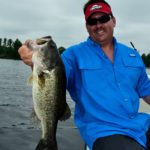
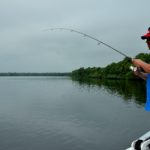
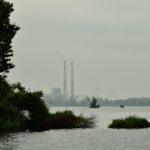
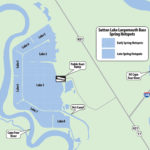


1 Trackback / Pingback